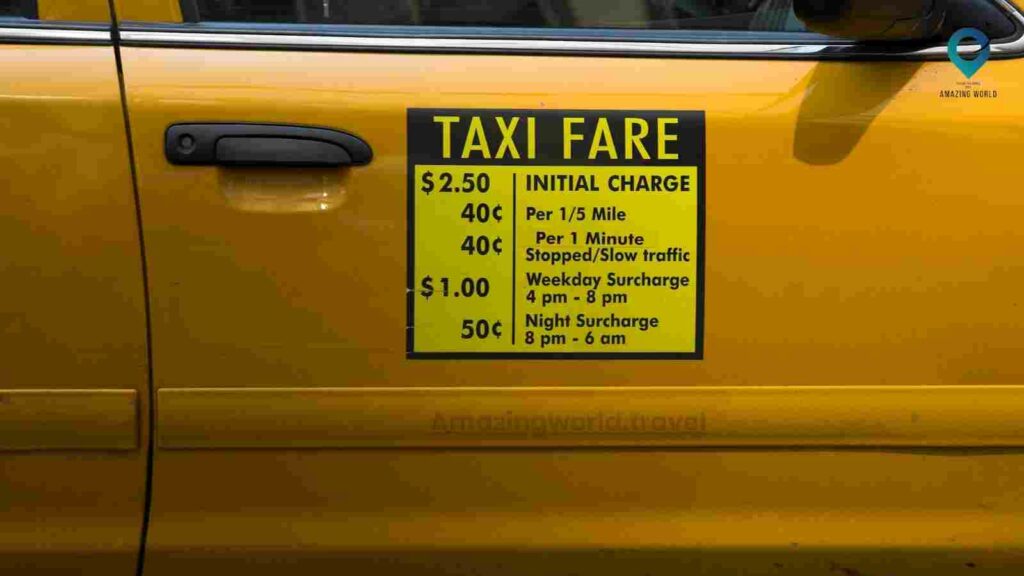How To Calculate Your Taxi Fare: A Step-by-Step Guide

Taking a taxi is a common mode of transportation in cities worldwide. However, it can be intimidating, especially if you’re unfamiliar with the area or concerned about overpaying for your ride. This comprehensive guide aims to demystify taxi fare calculations, equipping you with the knowledge needed to estimate your fare accurately.
There are three primary methods for calculating taxi fares: the Zone System, the Flat Rate System, and the Taxi Meter System. We’ll delve into each method in detail, ensuring you have a solid grasp of how they work.
Taxi Fare Calculation Methods
A. Zone System
- The Zone System simplifies taxi fares by dividing a city into different zones, each with a predetermined price for travel between them. This approach eliminates the need to constantly monitor the meter during your ride.
- For instance, if you’re taking a taxi from Zone 1 to Zone 2, the fare will be the same, whether you’re traveling a short distance within the zones or from one edge to another.
- However, it’s crucial to be aware of potential additional charges, such as tolls, extra passenger fees, or fees for luggage, which may apply depending on your ride.
B. Flat Rate System
- The Flat Rate System offers simplicity by charging a fixed fee for specific routes, typically between major locations like an airport and the city center.
- For example, if you’re traveling from the airport to downtown, you pay a predetermined fare, and it remains unchanged regardless of factors like additional passengers or luggage.
- This system is straightforward and eliminates surprises during the ride.
Taxi Meter System

- The Taxi Meter System is the most commonly used method for calculating fares. It relies on a meter in the cab that tracks your ride and determines the fare based on three key factors:
- Initial Fee: This is a flat fee charged at the start of every taxi ride. It varies but is typically a few dollars and doesn’t account for any distance.
- Cost per Mile/Kilometer: You’re charged a set amount for each mile or kilometer you travel during your ride.
- Cost per Minute: If the taxi is moving slowly or is stationary due to traffic, the meter switches to charging by the minute instead of by distance.
- To calculate your fare using the meter, you can use the formula: Base Fare + (Cost per mile * ride distance) + (Cost per minute * time in taxi while stationary or moving slowly).
- It’s important to note that metered taxis may have additional charges, such as tolls, extra passenger fees, luggage fees, or booking fees.
- Tipping your taxi driver is customary and generally ranges from 10-20% of the total fare.
Additional Considerations
- Beyond understanding the fare calculation methods, it’s essential to be aware of potential extra fees that may apply during your taxi ride. These fees can significantly impact the total cost.
- To simplify the process of estimating your fare, you can use online tools and apps like taxi fare finder’s calculators, which provide accurate fare estimates based on your route and chosen fare calculation method.
Looking for the best Car Rental service for your next travel Jouney? Therefore, we recommend you book your car rental from DiscoverCars.com – Official Website
Conclusion
Whether you’re dealing with the Zone System, Flat Rate System, or Taxi Meter System, this guide equips you with a comprehensive understanding of how taxi fares are determined. By being aware of the nuances of each method and potential additional charges, you can confidently navigate the world of taxi transportation and ensure a smooth and fair ride.
How much did you like Our Detailed How to spot and avoid the fake taxi scam? Review Also, please share these Blogs with your friends on social media.
Recommended
- Taxi scams in the USA and Europe
- 10 Common Taxi Scams and How to Avoid Them
- 10 Essential Taxi Safety Tips

Meet David Hoper, a passionate travel Blog writer with 7+ years of experience in travel content. Through his exemplary storytelling and engaging narratives, he shares his experiences and brings destinations to life. With a keen eye for detail and a love for exploration, he has cultivated a diverse portfolio of travel blogs that inspire and inform readers worldwide.








